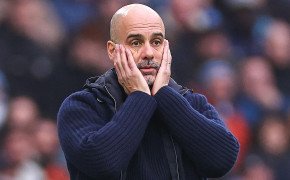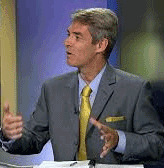Since the League Cup final, Southampton and Claude Puel have been landlocked in mid-table. As a consequence, their season has rather petered out. At the time of writing, they occupy ninth and could yet finish as high as eighth, but Puel will still be vulnerable once the season ends. Perhaps it is descriptive that Southampton are jockeying for position with Bournemouth and West Bromwich Albion; not bad teams, of course, but hardly esteemed company to keep.
The end of the season brings false economies: teams are not as engaged and players are not as driven. However, if a weakness has emerged in Southampton over the course of the year, it is their growing inability to create chances. Manolo Gabbiadini is a fine centre-forward blessed with an eclectic range of goal-scoring subtleties but, watching him lately, he appears figuratively and literally cut adrift from his teammates. Gabbiadini is not a targetman and, imaginative though he may be, he cannot always create opportunities for himself. But that appears to be what is demanded of him - intentionally or otherwise.
This is a problem. It may not be a priority in the same sense as the retention of Virgil van Dijk or Ryan Bertrand, but it is still an ailment in need of a cure. It is also why the rumours connecting Southampton with Marco Silva are so believable: Hull City may have been relegated, but the improvement Silva oversaw in the accuracy and precision of their attacking football must make him very appealing. Furthermore, he has been able to generate productivity from a far less talented group of players.
And that is the crucial point: Southampton’s improvement does not depend on exorbitant spending - although some investment would be welcome – but rather the re-imagination of its existing parts. In theory, Puel should have had a highly productive team this year: Dusan Tadic is a capable Premier League player; Nathan Redmond is unrefined but still highly dynamic; and James Ward-Prowse remains one of the better set-piece takers in the country. Additionally, while Sofiane Boufal and Pierre-Emile Hojbjerg have been inarguable failures, both possess the kind of attributes which lend themselves to offensive potency.
So maybe this is a ratio and speed issue? Perhaps the problem is not that Southampton do not have the right parts to play in an ambitious way, but more that those pieces have not been assembled in the correct manner?
Trying to explain that is difficult without disappearing down a rabbit hole of platitudes, but the explanation would seem to lie in a combination of factors: how quickly possession is moved forward, the numbers that are committed to the attacking zones and the decisions taken by the attacking players in those areas. In relation to that last point, one of the enduring criticisms of Tadic - particularly in 2017 - has been aimed at his inability to convert a good position into a good opportunity. For him, it seems, there is always one more man to beat or the chance to duck away from creative responsibility.
One of his most recent performances, against Arsenal at St Mary’s, was a typical example of that. The scoreline may have suggested a comfortable away win, but the hosts exerted plenty of gentle pressure in that game. It did not translate to anything tangible, though, and Tadic - who did not complete a single pass into Arsenal’s box - was particularly responsible for that. He was not necessarily the worst player, but he was emblematic of his side’s biggest issue: with Gabbiadini moving as well as he does at the top of the formation, it is imperative that his instincts are complemented by quick, precise delivery that, at the moment, just does not exist.
It is quite possible that part of that problem lies with him. Southampton’s recruitment is famously exceptional and Les Reed presumably has a long list of summer targets sitting on his desktop as we speak. Maybe one of them is a second forward: someone who can play alongside Gabbiadini and operate as a more static, muscular focal point. The Italian moves in a highly instinctive, unpredictable way and no two goals he scores are seemingly ever the same; there is clearly an argument, then, for adding a bit of stability into the forward line and providing those attacking-midfielders with greater continuity.
Ultimately, it’s difficult to properly diagnose this problem. The frustration, however, lies in knowing that Southampton are so close to being an extremely good team. Whatever decisions are made at the end of the season, coaching-related or otherwise, their emphasis must fall on this area. It is highly descriptive, for instance, that despite their available flair and diversity, Puel’s team have only managed to score as many league goals as Tony Pulis’s army of centre-halves (41).
That should not be - and it must not be again.
















